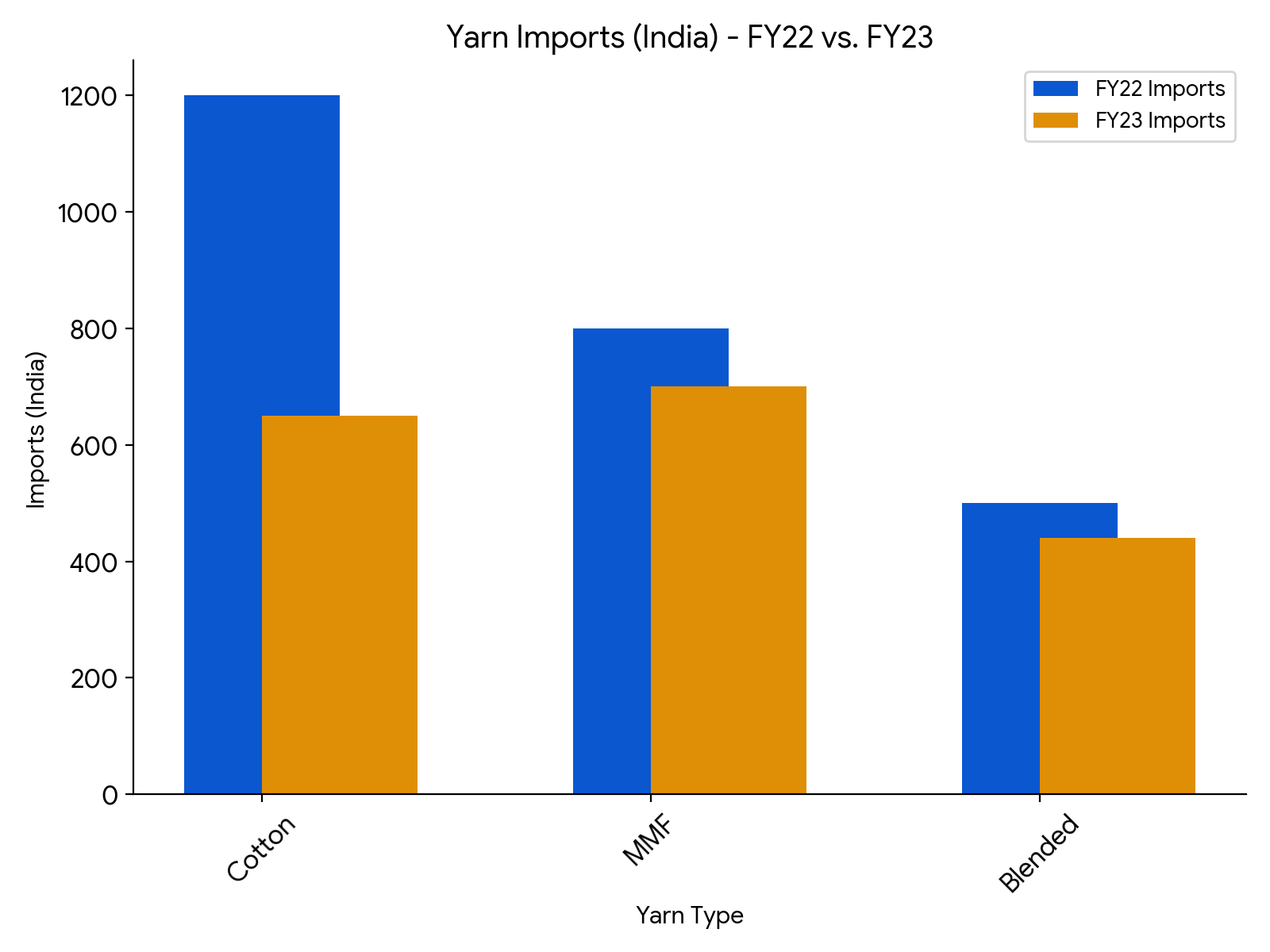Yarns Unraveling: India loses ground in Bangladesh's import basket

Traditionally, India has been a key supplier of yarns, both cotton and man-made fiber (MMF) blends, to Bangladesh's booming garment industry. However, recent trends indicate a concerning decline in yarn imports from India. This raises concerns for Indian yarn exporters.
Bangladesh's yarn imports witnessed a sharp decline of 46.72 per cent in FY23 compared to the previous year, reaching $2.79 billion. The trend continued in the first half of FY24, with fabric imports (including yarn) dropping by 13.4 per cent to $3.66 billion year-on-year. While China remains a major competitor, the decline primarily impacts India's market share. Despite a slight dip (11.6 per cent), Bangladesh's MMF imports from China stand at $686 million for the first half of FY24.
Table: Product-wise breakdown (million $)
|
Yarn Type |
FY22 Imports (India) |
FY23 Imports (India) |
Change (%) |
|
Cotton |
1200 |
650 |
-45.83 |
|
MMF |
800 |
700 |
-12.5 |
|
Blended |
500 |
440 |
-12 |
Reasons for the fall
Several factors contribute to India's declining share:
Rising gas prices: Bangladesh's garment industry, heavily reliant on imported yarn, faced challenges due to the gas and energy crisis in FY23. This led to decreased demand for yarn overall.
Payment delays: Delays in banking and finance transfers from Bangladesh to India create cash flow issues for Indian exporters.
Competitive pricing: China's aggressive pricing strategies might be attracting Bangladeshi garment manufacturers.
Logistical challenges: Delays at ports and complex documentation processes can hinder smooth yarn movement from India to Bangladesh.
Domestic competition: Bangladesh's own yarn production capacity has been steadily increasing, offering a more readily available and potentially cost-effective alternative.
Perhaps what works in China’s favour is its well-established supply chains and strong relationships with Bangladeshi garment manufacturers. Also it offers economies of scale as China's larger production capacity allows them to offer potentially lower prices. China offers a wider variety of yarn types and blends, catering to Bangladesh's diverse garment manufacturing needs.
Moving ahead
Both India and Bangladesh are taking steps to address these challenges. India is streamlining customs procedures, exploring rupee-taka settlements for easier transactions, and potentially offering competitive pricing strategies. Bangladesh is diversifying yarn import sources while potentially increasing domestic production capacity.
Meanwhile delays in banking and finance transfers are being tackled through other alternatives. They are examining options like rupee-taka settlements or utilizing third-party payment mechanisms for faster transactions. And both governments could collaborate to find solutions for smoother financial flows between the two nations.
Regaining a foothold in Bangladesh's yarn import market requires India to address competitiveness concerns, streamline logistics, and facilitate easier financial transactions. Building stronger trade ties and exploring innovative solutions will be crucial for India to reclaim its position as a leading yarn supplier to Bangladesh's garment industry.
